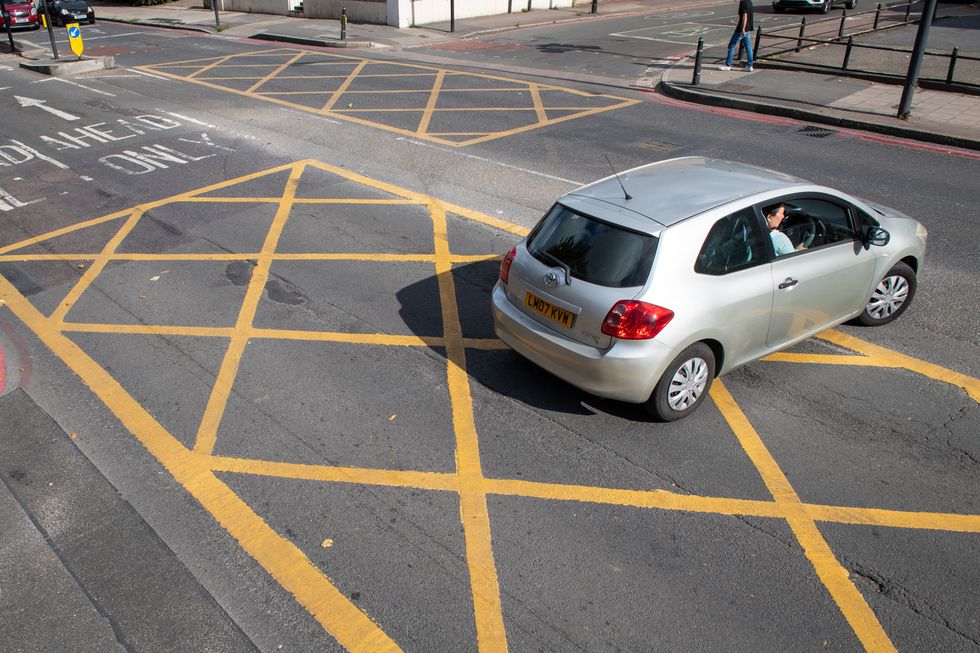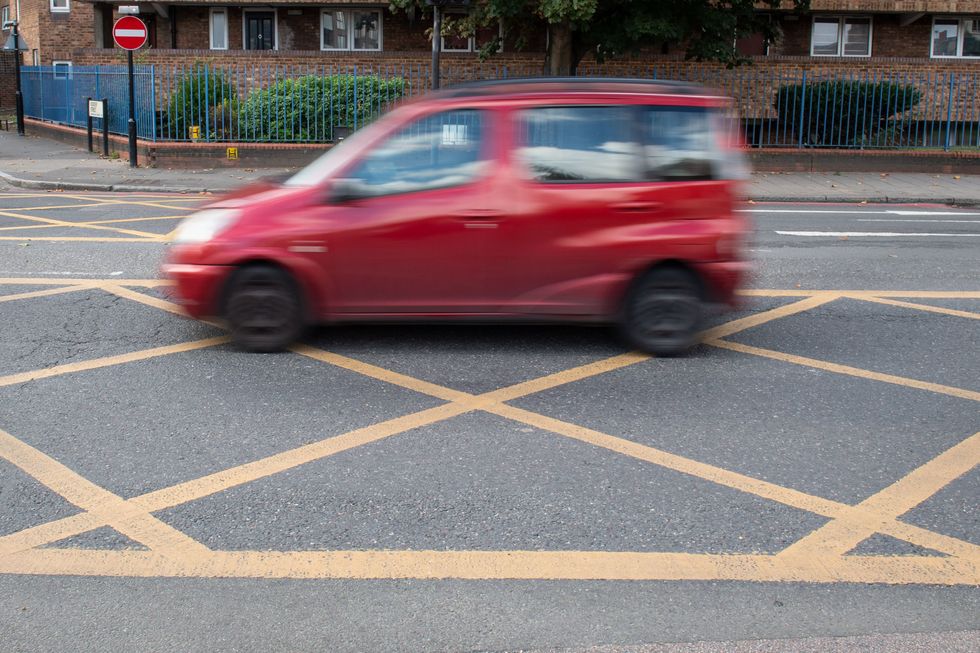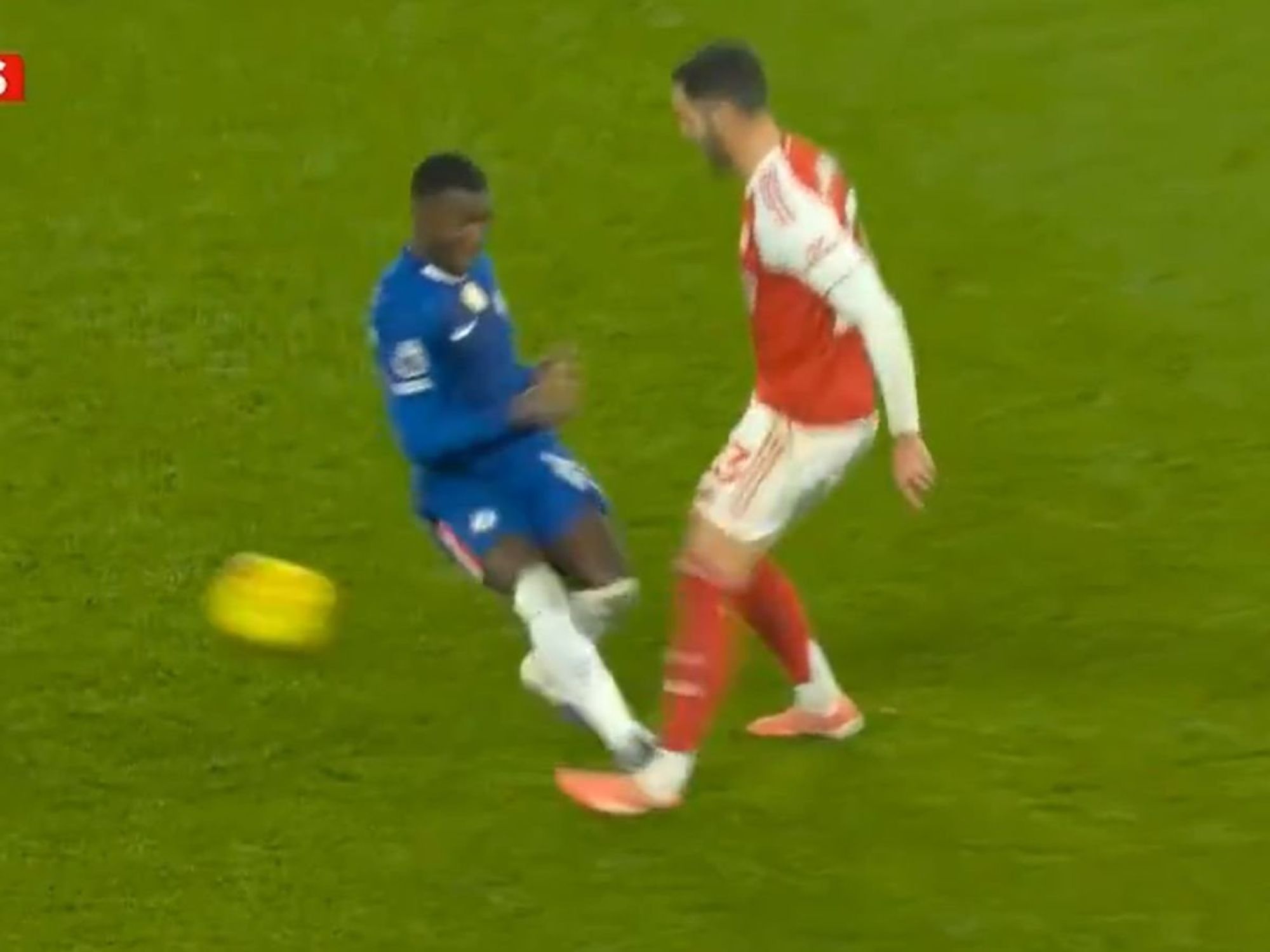Drivers urged to avoid yellow box junctions which are too big or risk being slapped with unnecessary fines

Drivers can face a £160 penalty for entering yellow box junctions
Don't Miss
Most Read
Latest
Experts have issued an urgent warning to drivers to make sure they avoid getting trapped in yellow box junctions which could see them hit with enormous fines.
On Transport for London red routes, drivers can face a £160 penalty for entering yellow box zones, although it will be reduced to £80 if paid within 14 days.
The penalty in Cardiff and other English authorities is just £70, again being cut by half to £35 if the payment is made within 21 days.
Almost every yellow box junction of 100 analysed across London and Cardiff is bigger than it needs to be to prevent traffic congestion.
Do you have a story you'd like to share? Get in touch by emailing motoring@gbnews.uk

The RAC found that 98 of 100 junctions were larger than necessary
|PA
The RAC found that 98 junctions were larger than necessary, with the average box being 50 per cent bigger than it needed to be to help reduce traffic congestion.
More than half of the junctions are not under traffic light control and could therefore easily be converted to “keep clear” markings instead.
Under Highway Code Rule 174, drivers must only enter boxes if they can see their exit is clear.
While there have been occasions where drivers have successfully challenged fines from councils where boxes are too big, unfortunately, these decisions do not impact all.
The RAC estimated that a number of reasons could impact why yellow boxes might be too big.
The most likely one is that they were painted prior to 2016 when the regulations were last updated and demanded that boxes had to extend to the kerbs on either side of the junction.
Government guidance from 2022, stated: “Enforcement action should not commence at any location where contraventions could be avoided by reasonable improvements to the highway or to traffic signs, and not until such improvements are made and appropriate monitoring has been carried out.
Rod Dennis, spokesperson for the RAC, explained that with more and more councils starting to enforce yellow box junctions, it is vital that they are designed to aid traffic flow and that they don’t exist simply to raise revenue from drivers.
Dennis added: “Unfortunately, any box that is bigger than needed – whether that’s due to an oversight on the council’s part or because it was painted on the road many years ago and hasn’t been reviewed – risks drivers being fined unnecessarily when their actions haven’t contributed to congestion.
“What’s more, if a driver can’t clearly see where a box ends but they know there’s a chance of getting fined if they stop in one, they’re more likely to hesitate – meaning traffic could start backing up, which is the polar opposite of what yellow boxes are intended to do.
“It’s therefore all the more frustrating to see that almost all of the 100 yellow boxes examined for this study are larger than they need to be.
“We fear that unnecessary penalties are going to mushroom in the coming years as more councils start enforcing yellow boxes, unless a responsible approach to the design and enforcement of them is taken.”
LATEST DEVELOPMENTS:
- M25 closure: Drivers issued urgent warning of 'huge disruption' and 'gridlock' as major motorway shuts today
- Petrol and diesel drivers could face new emissions laws in the UK after major European Parliament decision
- Major car brands announce huge recall affecting 200,000 vehicles including EVs over safety concerns

The Highway Code states that drivers must only enter boxes if they can see their exit is clear
| PAMaking sure yellow boxes are the correct size means that only those who actually breach traffic rules obtain a fine rather as a blanket statement for anyone in the zones, Dennis added.
He continued: “The Government has stated that ‘poorly designed schemes can undermine enforcement overall and give rise to public perception of revenue raising.’
“But it needs to go further and be crystal clear with local authorities about what is acceptable and what isn’t when it comes to the design of yellow box junctions. The current official design guidance is woefully inadequate and needs to be updated.”










